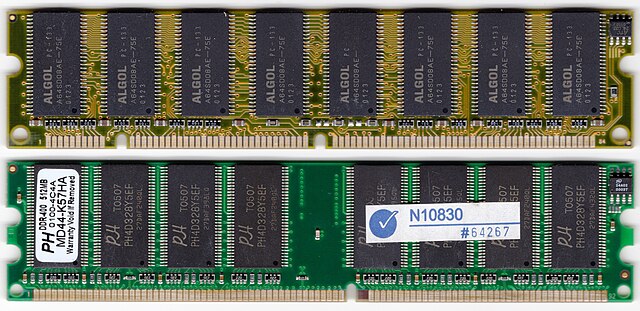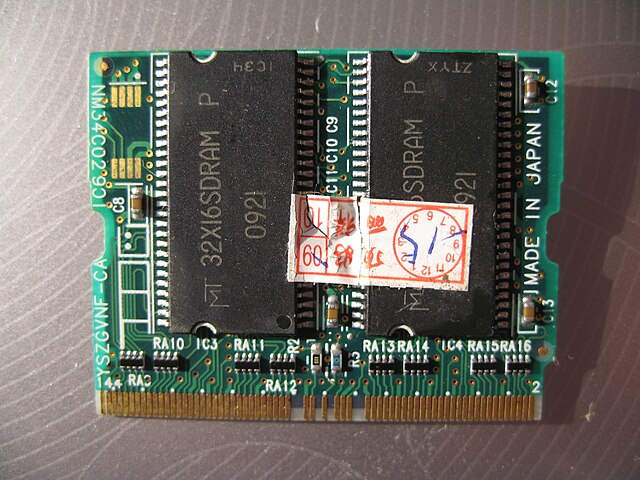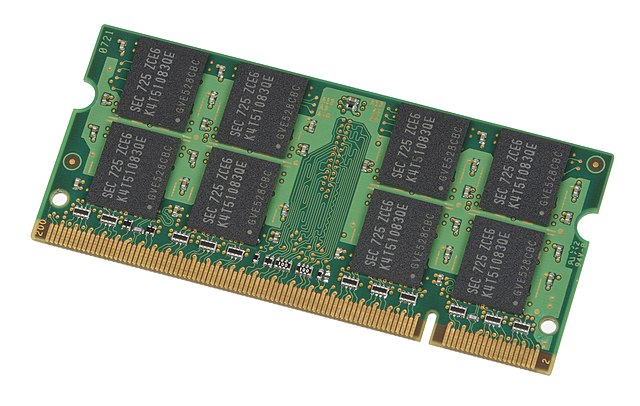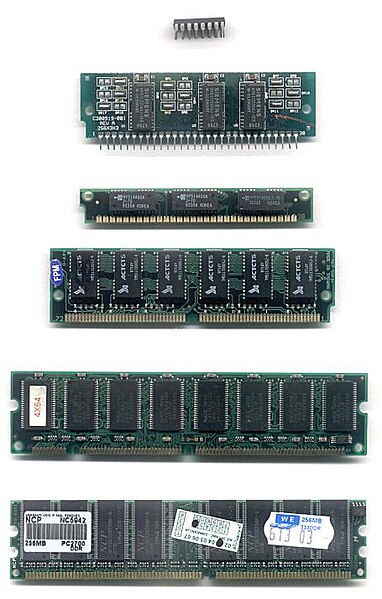A DIMM, or Dual In-Line Memory Module, is a popular type of memory module used in computers. It is a printed circuit board with one or both sides holding DRAM chips and pins. The vast majority of DIMMs are standardized through JEDEC standards, although there are proprietary DIMMs. DIMMs come in a variety of speeds and sizes, but generally are one of two lengths - PC which are 133.35 mm (5.25 in) and laptop (SO-DIMM) which are about half the size at 67.60 mm (2.66 in).
Two types of DIMMs: a 168-pin SDRAM module (top) and a 184-pin DDR SDRAM module (bottom). The SDRAM module has two notches (rectangular cuts or incisions) on the bottom edge, while the DDR1 SDRAM module has one. Also, each module has eight RAM chips, but the lower one has an unoccupied space for the ninth chip; this space is occupied in ECC DIMMs.
Three SDRAM DIMM slots on a ABIT BP6 computer motherboard
256 MB MicroDIMM PC133 SDRAM(Double sided, 4 chips)
A 200-pin PC2-5300 DDR2 SO-DIMM
In computing, a memory module or RAM stick is a printed circuit board on which memory integrated circuits are mounted.
Two types of DIMMs (dual in-line memory modules): a 168-pin SDRAM module (top) and a 184-pin DDR SDRAM module (bottom).
Memory modules of SK Hynix
A 256 x 4 Kibit 20-pin DIP DRAM on an early PC memory card, usually Industry Standard Architecture
Common DRAM packages. From top to bottom: DIP, SIPP, SIMM (30‑pin), SIMM (72‑pin), DIMM (168‑pin), DDR DIMM (184‑pin).








